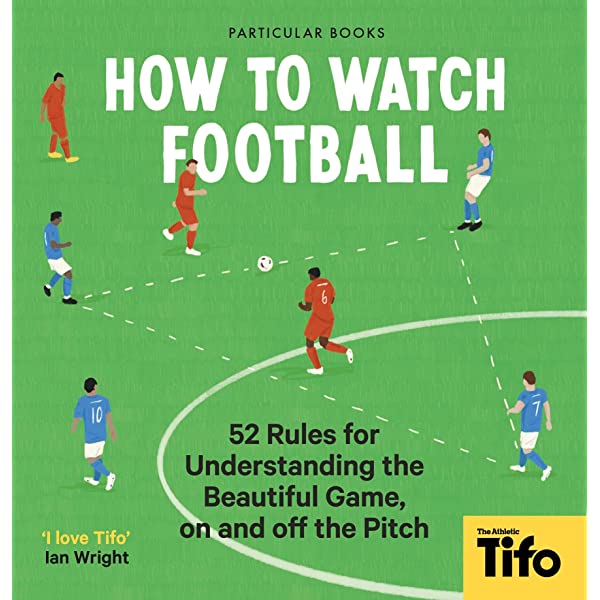Soccer is a popular sport played and enjoyed by millions around the world, and it is governed by a set of 17 basic rules covering all aspects from the ball size and shape to the duties of referees and assistant referees. The rules impact tactical play, and the performance of players, and are enforced by referees and assistant referees. Other regulations surrounding player registrations and transfers, the use of technology, and spectator behavior are also essential to maintaining the integrity of the sport. Ultimately, the rules and regulations of soccer have played a significant role in the development and success of the sport over the years.
A Close Look at the Rules and Regulations of Soccer: Exploring the Fascinating World of the Beautiful Game
Soccer or football is one of the most popular sports across the globe, with millions of people playing and watching it every day. It is a game that requires individual skills, tactical awareness, and teamwork. At the same time, it is also governed by a set of rules and regulations that ensure the game is played fairly and safely. In this article, we will explore these rules and regulations in detail, highlighting their importance and impact on the game.
What are the Basic Rules of Soccer?
Soccer has 17 basic rules, which define how the game is played. These rules cover everything from the size and shape of the ball to the duties of the referees and assistant referees. Some of the most important rules include:
- The game is played in two halves of 45 minutes each, with a 15-minute break in between.
- A team can have a maximum of 11 players on the field, including a goalkeeper.
- The ball must cross the goal line entirely to be considered a goal.
- Players cannot touch the ball with their hands or arms, except for the goalkeeper within their penalty area.
- Fouls and misconduct such as tripping, pushing, and unsporting behavior can result in free-kicks, penalties, or yellow and red cards.
How do the Rules Impact Tactical Play?
The rules of soccer play a significant role in shaping the tactics used by teams. For instance, the offside rule, which states that a player cannot be closer to the opponent’s goal than the ball and the second-to-last defender when the ball is played, has a significant impact on attacking strategies. Teams often use tactics such as drawing the opposition offside or playing a high defensive line to catch the opposition out.
Similarly, the rule against using hands and arms has led to the development of different positions and styles of play. The goalkeeper, being the only player allowed to touch the ball with their hands, has a unique role in the team’s tactics. Teams often play with a sweeper keeper who is comfortable with the ball at his feet and can start counter-attacks by playing long balls forward.
The Role of Referees and Assistant Referees
The rules of soccer are enforced by referees and assistant referees, who are responsible for ensuring that the game is played fairly and safely. The referee has the final say on all decisions, including fouls, misconduct, and goals, while the assistant referees are responsible for monitoring the offside rule and signaling when the ball goes out of play.
Referees and assistant referees are required to have excellent knowledge of the rules of soccer and are trained to make quick and accurate decisions during the game. They are also expected to enforce the principles of fair play and respect for the game.
Other Regulations Affecting the Game of Soccer
Apart from the basic rules, there are also several regulations that impact the game of soccer. These regulations cover areas such as:
- Player registrations and transfers
- The use of technology and video assistant referees (VAR)
- Financial fair play
- Spectator safety and behavior
These regulations are designed to ensure that the game is played fairly, safely, and transparently. For example, player registration and transfer regulations help maintain the integrity of the competition by ensuring that teams do not exceed the designated budgets or illegitimately influence the competition through illegal transfers.
The Importance of Rules and Regulations in Soccer
The rules and regulations of soccer are essential in ensuring that the game is played fairly, safely, and transparently. Without these rules in place, the game would be chaotic, and players would be at risk of injury or foul play. These rules also help maintain the integrity of the competition and ensure that it is played on a level playing field.
In addition, the rules of soccer have contributed significantly to the development of the sport over the years. The offside rule, for instance, has led to the development of new attacking and defensive strategies, while the rule against using hands and arms has resulted in the evolution of different positions and playing styles.
Conclusion
In conclusion, soccer is a beautiful game that is governed by a set of rules and regulations designed to ensure that it is played fairly, safely, and transparently. These rules impact tactical play and the performance of players, and they are enforced by referees and assistant referees who have excellent knowledge and training. However, other regulations around player registrations and transfers, the use of technology, spectator behavior, and financial fair play are also essential to maintaining the integrity of the competition. Ultimately, the rules and regulations of soccer have played a significant role in the development and success of the sport over the years.
